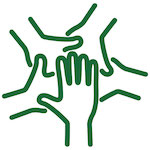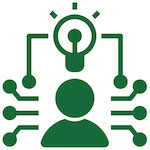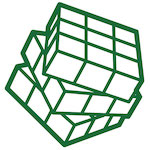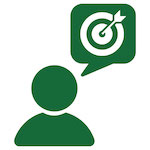Engaging in our intercultural society
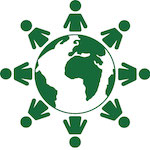 Students who thrive as members of a diverse society handle diversity in perspective, position, and approach adeptly. They communicate and collaborate effectively within diverse groups and an increasingly global society.
Students who thrive as members of a diverse society handle diversity in perspective, position, and approach adeptly. They communicate and collaborate effectively within diverse groups and an increasingly global society.
What this could look like across a program, for a learner, and in a single course:
| When I am learning | When I am ready to work with others | When I am prepared for my career | |
|---|---|---|---|
| What competency development might look like across a program... |
I can identify my position, power, and cultural norms accurately, and I can name some of the implications of them. I respect different points of view in my discipline and with other disciplines and I seek them so I will become a capable disciplinary colleague. |
I use words and phrasing of different groups appropriately to communicate accurately and fully. I model the acceptance of cultural norms that are not my own and encourage a variety of perspectives |
I have examples of things I have created that can provide opportunities for all, including marginalized groups. I can respond to evolving local and global challenges with flexibility, so solutions are both sincere and supportive across all impacted groups. |
| What this might look like for a student... | In her class on Indigenous literature, Emily participates in discussions in a way that demonstrates her perspectives come from her life experience. She asks questions to understand the perspectives of others and seeks to understand the Indigenous worldviews in the novels. | In her upper year class, Emily collaborates with others to ensure everyone is heard within her group project. She intentionally invites others in the project team to contribute in ways they are most comfortable. | Emily has a portfolio that includes a communications project done with a non-profit group during 4th year and an interdisciplinary project with geography and agriculture students on the "zero hunger" sustainable development goal. In an interview, she can show and describe these examples, and explain why she’ll work well with the diverse staff at the workplace. |
| What this might look like in a course... | In his Environmental Engineering course, Dr. Michael Kim creates authentic case studies where students are provided with just enough information to make critical decisions and devise solutions that consider all stakeholders' needs. One case study involves managing water resources in a developing country, with limited data on cultural, social, and economic factors. Students work in diverse teams to develop strategies, reflecting at each stage on the potential impacts of their decisions. Dr. Kim guides discussions on the consequences of overlooking cultural contexts and provides feedback on their solutions, emphasizing the importance of inclusive, culturally aware approaches. This iterative process helps students understand the complexity of global challenges and the value of considering diverse perspectives in engineering solutions. | ||
Undergraduate Student Competency Program Rubrics – utilize or adapt this rubric for programs and courses.
Other ideas for developing this competency in the classroom:
- Reflective Activities: Provide opportunities for students to reflect on their own cultural norms, positions, and power dynamics through class discussions, reflective essays, and interactive activities.
- Group Projects: Create group projects that require collaboration among students, each student has a role and group norms are created that ensure diversity of perspectives and position are prioritized.
- Model and promote inclusive language and behaviors in the classroom and recognize and celebrate diverse cultural norms.
- Case Studies and Simulations: Facilitate case studies in the classroom where students can practice and receive guidance and feedback on how to create inclusive opportunities and respond to challenges in a way that supports and recognizes all individuals.
- Community Partnerships: Facilitate experiential learning through partnerships with local organizations, enabling students to work on real-world problems in diverse settings.
- Portfolio Development: Encourage students to include experiential learning projects in their portfolios, demonstrating their ability to work effectively in diverse and intercultural settings.
Support
The Gwenna Moss Centre for Teaching & Learning
- connect with us to get one-to-one strategies to help learners develop this competency in your classroom. Email for information: gmctl@usask.ca
Career Services
- FUSION modules: Adaptability, Communication, Inclusivity, Self-Management
- Career Readiness Series workshop (Self-Exploration module)
International Student and Study Abroad Centre (ISSAC)
- Introduction to Intercultural Communication Canvas course (NSID login required)
University Library
- I-Portal - A repository of Indigenous studies resources, including academic articles, e-books, and more. It helps integrate Indigenous perspectives and knowledge into your course to promote intercultural competency.
- Learning Hub - helps instructors find academic skills resources, tutorials, and other learning support services for students. These resources can be integrated into courses as appropriate to support the development of USask graduate competencies
- Instructors can request workshops and custom materials from learning specialist and librarians tailored to course needs to support the USask graduate competencies.
Office of Vice-President Research
- FYRE - The First Year Research Experience is an opportunity for instructors to integrate research projects into first-year courses, helping students develop critical research skills such as problem-solving, data analysis, and communication.


